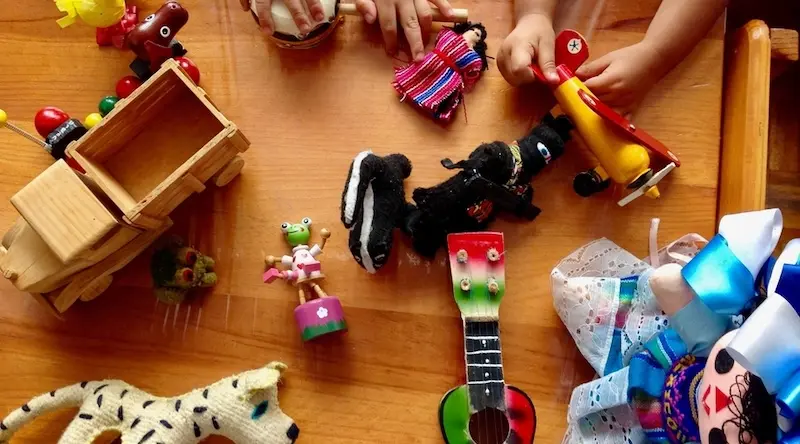settings
children
With Famly since
Why do home learning environments matter?
There has been plenty of work done on the importance of home learning in the early years, and all of it makes a very strong case for the crucial role it plays in a child’s early development.
Just some of the things that we know:
- Increased learning opportunities at home have been shown to have a positive effect on literacy and numeracy attainment at school
- A positive home learning environment is even more important than parent occupation, education or income.
- Home learning environments impact school readiness and a good one will improve independence and creativity once at school.
- Parents are ready. In the latest government survey, more than a third want to do more to support their child’s learning at home.
What’s more, it’s a statutory requirement of the EYFS to support children’s learning at home. If you’re strong on this then you’re going to be providing better care for the children and be in the good books of your next Ofsted inspector.

What does a good home learning environment look like?
This is all well and good, but what do these studies mean when they talk about positive home learning environments?
Understanding the importance of play is key, as is the ability to encourage and facilitate a child’s learning. One study also tells us that the starting point needs to be a place where:
- Children are listened to
- Their contributions are valued
- Their ideas are taken seriously
- Their language and thinking is encouraged
What about specific examples? Well, many studies quote the following seven approaches:
- Singing songs and nursery rhymes
- Reading with the child
- Visiting the library
- Playing with letters and numbers
- Painting and drawing
- Taking children out and about
- Opportunities to play with friends at home
What do parents need to know?
So, now we’ve got a bit of context about what a good home learning environment is, it’s time to look at some of the things you should be trying to educate your parents on.
1. The importance of play
Many parents can try and be too academic with their children’s learning in the early years, giving them activities or trying to work with them on things that they’re not ready for.
Instead, you need to educate them on the importance of play. Explain to them why this is the best way for children to learn, and point them towards this wonderful TED Talk if they want some more proof.

2. How to interact
As early years leaders, you all know the best way to interact with children in order to encourage their confidence and communication potential.
But not all parents do. Taking the time to explain the best way to interact with their children is crucial, because interactions are the cornerstone of a quality home learning environment. Try to cover ideas like:
- Using a wide vocabulary wherever possible
- Using open-ended questions – and waiting for the child to answer
- Being positive and encouraging
- Giving children choices
3. The developmental stages
In surveys, many parents have noted that they struggled to understand age-appropriate activities at different stages of their child’s development.
This is where it’s good to refer back to the seven activities we outlined earlier, as well as explaining the importance of child-led play with parents. But if they do want some more concrete ideas, it’s a good opportunity to show them through the EYFS and help to give some context to the way you approach child development.

How can you help improve a child’s home learning environment?
Now that you know what parents need to know, it’s time to work out how to tell them.
Parent partnerships are tricky, and it takes time to build up trust, so don’t worry if things don’t start working straight away. But try out some of these ideas, and you’ll be on track to develop even better home learning environments for the children in your care.
1. Assume that every parent is interested
This should be your starting point. It’s easy to label some families as difficult (and let’s face it, some of them are!). But what seems like a lack of care can often be more simply a difference in communication style or a lack of confidence.
One way to attack this is to step outside of ‘the way we do things’ and find ways of communicating that work for them. You can start by asking them. It might be weekend or evening visits, or even taking the time to go to their home. They might prefer online communication, email, newsletters or just good old face-to-face contact.
Whatever it is, don’t make the mistake of putting parents in a ‘difficult box’ until you know for sure that you’ve done everything you can to reach out to them.

2. Use your key workers
One way to break down these difficult communication barriers is to utilise your key workers for more parent communication.
The key worker relationship is so crucial to children, but it can be a great link with parents too. As a manager, you can only know each individual situation so well, so why not make the person dealing with the child every day the full-time contact person for the family too?
By empowering your practitioners to share their knowledge and give context to the daily achievements and challenges of their key children, you’re going to get parents more involved.
Another idea might be to designate a specific member of staff who looks after all parent relationships. Find your best communicator and put them to the job of building stronger, lasting relationships with your parents.
3. Open up your training
If you want parents to be more clued up on the finer points of child development, why not invite them along to your staff training?
You don’t need to front the costs if parents are willing to contribute, but it can be an invaluable way of getting interested parents to understand more about the ways children grow. What’s more, it’s initiatives like this that are instrumental in growing a better nursery community at your setting.
4. Loan out resources
When children have a particular toy or book they’re fascinated with, why not loan it out to the family for the weekend? It will help to give more continuity to the child’s development and improve parent understanding of what goes on during the week.
It might feel like a gamble to start loaning out precious equipment, but it’s better to start with trust. Maybe you will end up losing too many resources, and have to stop loaning them out. But you’ll never know if you don’t try, and you may well be surprised what happens to your parent relationships when you start with a good gesture.
If you want to go one step further, take a look at the further reading section at the bottom to find some great examples of take-home activities you can give to parents.

5. Let parents contribute observations
Sharing observations of children’s progress through an online system or paper learning journals is one way to engage parents with the background of what’s going on with their child’s development.
But why not flip it around? Seeing what’s going on at home is important too, so it can help if you encourage parents to contribute observations and notes from their time away from the setting too.
An online system that allows for parent observations is a great way to encourage this, although asking for photos and notes works too.
Also, try to consider parents opinions on development whenever possible, and let them be involved in decision making around the child. You might need to give a bit of ground from time to time but working on compromises can help to develop ever stronger bonds.

6. Social Events
What good is all of this knowledge if you don’t have the community relationships with parents in the first place?
Nursery events are a great way of growing this relationship. Stay and play sessions, coffee mornings and summer parties are all good ideas to get parents more involved in the day to day life of your setting.
Finding activities to involve fathers should be a focus too, as they are often far less likely to attend. Starting off with a father’s day event might be a nice way to introduce more fathers into the nursery community.
Further Reading
We thought we’d share with you a few of the best pieces that we found while researching this article.
- A great overview of some of the studies and what really matters with HLE.
- A helpful rundown of seven key activities you can share with parents to help stretch a child’s mind and why they matter.
- Research from a consortium of charities displaying actionable information written especially for nurseries on how to improve HLE at your setting.
- Direct advice on how to better support the Home Learning Environment including a list of take-home activities and case studies from nurseries that use them.
- A research piece from Action for Children all about the effect of a positive home learning environment in the early years and the effect on outcomes for children.
The big ideas
Try learning journals for free
Add observations, and build digital learning journals to share with families instantly. All with your completely free 14-day trial.
Get started









